Solomon Asanté has been a key part of Phoenix Rising’s squad for the past three seasons since he joined the club in January of 2018. Since his joining, Rising has been a top club in the Western Conference of the USL; in 2019, the team amassed 78 points in 34 matches, winning their conference by 18 points and outpacing the Eastern conference winner, Pittsburgh Riverhounds SC, by ten points. Asanté’s contribution to the team’s success is undeniable, which will be detailed in this scout report.
This tactical analysis will examine how Asanté fits into the tactics at Phoenix Rising under manager Rick Schantz. The analysis will primarily focus on how he contributes to their attack while also briefly focusing on his role in their press and defence.
Player overview
The 29-year-old Ghanian takes up the position of right wing in Phoenix Rising’s attacking 4-3-3, similar to the formation used by Barcelona. In his first season for Phoenix, he scored 13 goals and provided nine assists. Last season, Asanté scored 22 goals and registered 17 assists in a total of 32 matches for Phoenix, earning him the 2019 USL MVP award. He led the league in both scoring and assists as Phoenix cruised to 90 goals on the season, meaning Asanté contributed to 43% of all of Rising’s goals last season. This season doesn’t appear to be any different; despite a large break between the first match and the rest of the season, Asanté has already contributed three goals and three assists in three matches.
Role in Rising’s press
One of Phoenix’s Rising’s keys to success is their ability to press efficiently and dictate how opponents play out from the back. Their front three are the first line of that press and can often force an opponent’s decision without having to use their midfielders. This comes down to the movement and spacing of the front three, which Asanté is a part of as a right-winger.
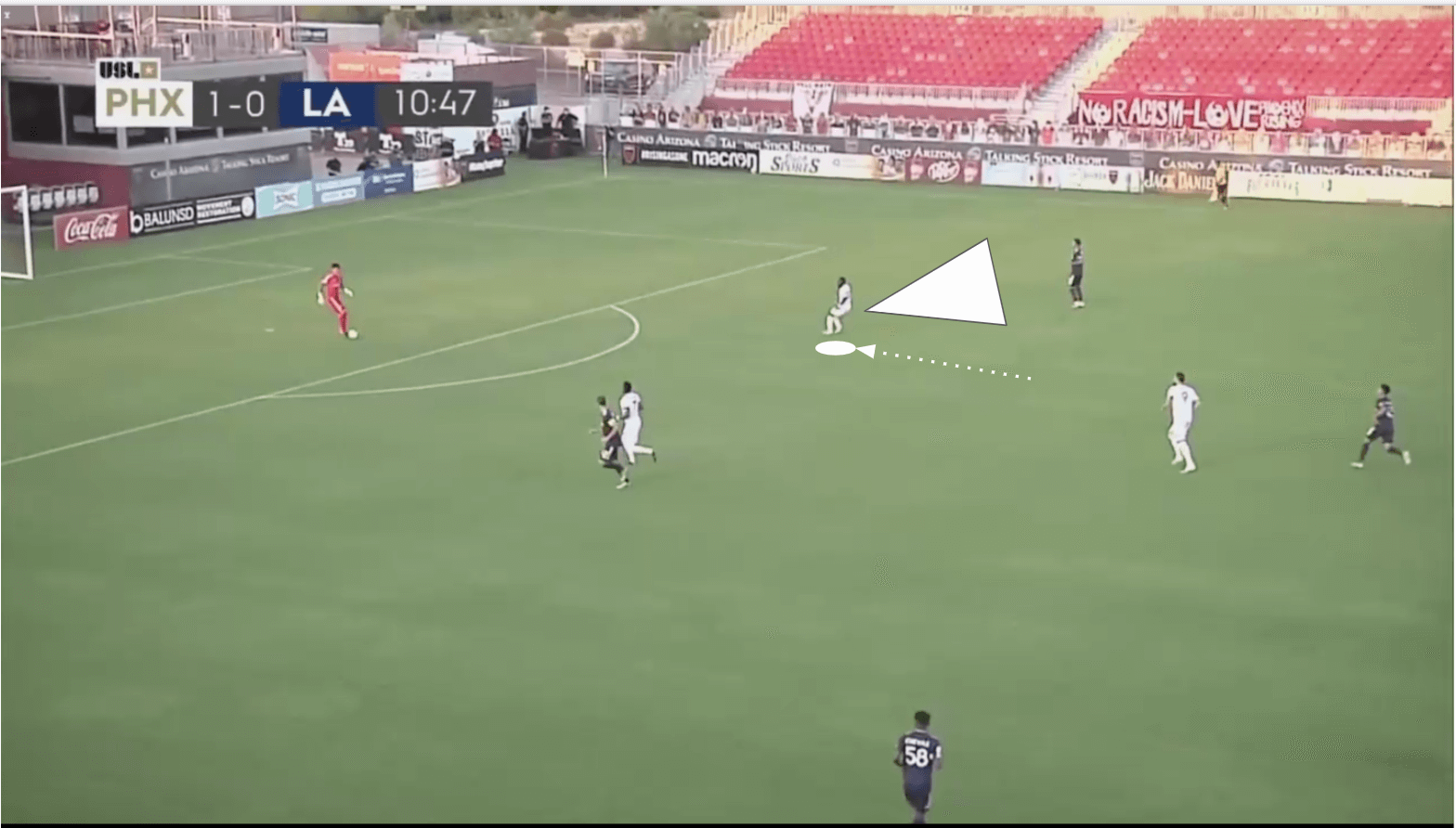
His main priority is to prevent the goalkeeper from being able to play his centre-back. This movement is mirrored by Junior Flemmings, who is marking the other centre-back. Rising use their forward to mark LA Galaxy II’s holding midfielder, essentially forcing the ball either out wide or long. In the instance above, Asanté positions himself in the passing lane between the goalkeeper and the centre-back, using his cover shadow to prevent the pass. This prevented the pass being played, but it also allowed Asanté to be able to pressure the goalkeeper if he wanted to. Rising do not consistently pressure the opposition’s goalkeepers, but they create an uneasiness in them by using cover shadows to prevent passes to a centre-back. Asanté also uses his speed to his advantage when defending centre-backs, essentially setting up traps for the opponents to play into.
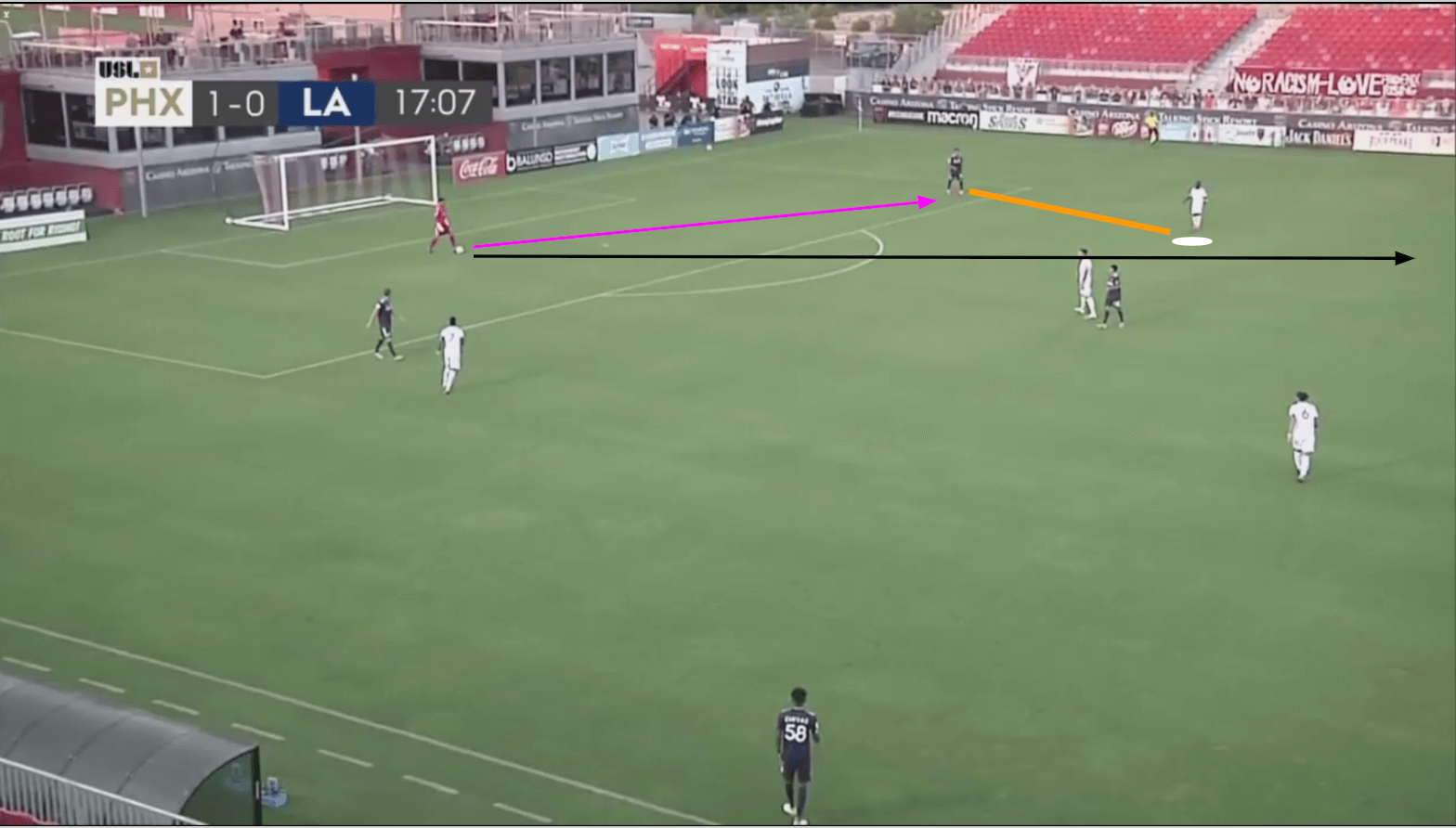
In the image above, Asanté was marking the centre-back again, but this time he was facing his defender with a good amount of space between them. With the ball at the goalkeeper’s feet, Asanté, who often will take this position, was looking for the goalkeeper to play his centre-back, shown with the pink pass. Because he is so fast, Asanté can leave what appears to be a large amount of room between him and the man he is marking. However, due to his speed and the length of the pass that would need to be played, he could easily close down that defender and dispossess him. This means that Asanté essentially sets up a 1-man pressing trap, which is incredibly dangerous if opponents are not paying attention to his spacing. In the instance above, the goalkeeper chose to send the ball long, which still benefited Phoenix.
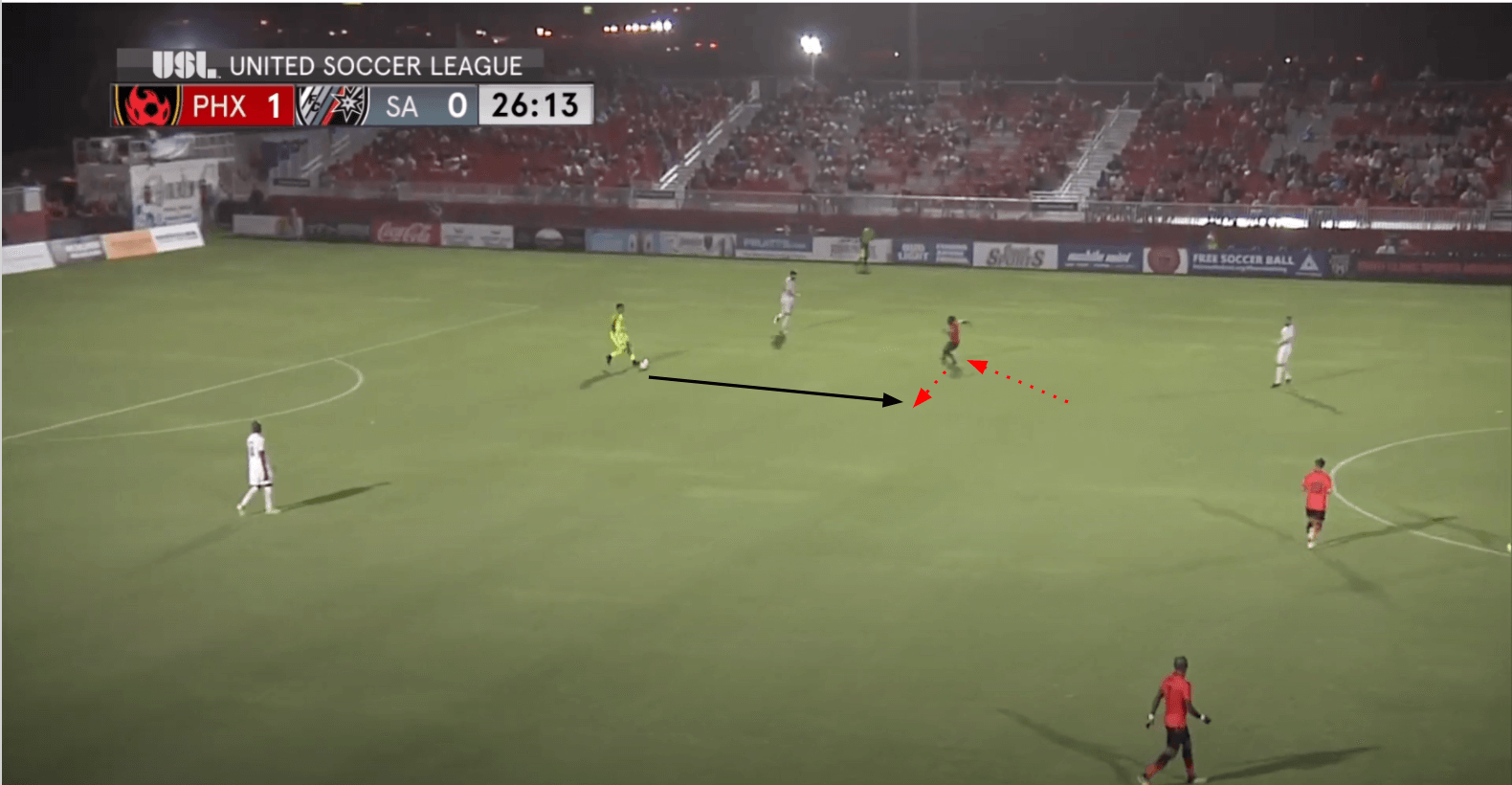
An example of an opposing goalkeeper not paying attention to his spacing is shown above. Asanté acted like he was about to press the centre-back, moving quickly towards the defender as the goalkeeper progressed up the pitch. Asanté was aware of both the goalkeeper and his centre-back; he chose the perfect angle to be able to prevent the goalkeeper’s pass for as long as possible. As he moved diagonally towards the centre-back, he also moved towards the goalkeeper. When the goalkeeper went to pass to his midfielder, Asanté was able to step into the passing lane, win the ball, and then bury it into the back of the net within seconds. His speed and deception are a large contribution to the success of Rising’s press and consequently, their success in the table.
Chance creation for teammates
While Solomon Asanté is certainly an excellent goalscorer, he also consistently creates chances for his Rising teammates, finding them in pockets of space and providing them with a pass that sets them up for success. Our first example comes from his 2018 season.
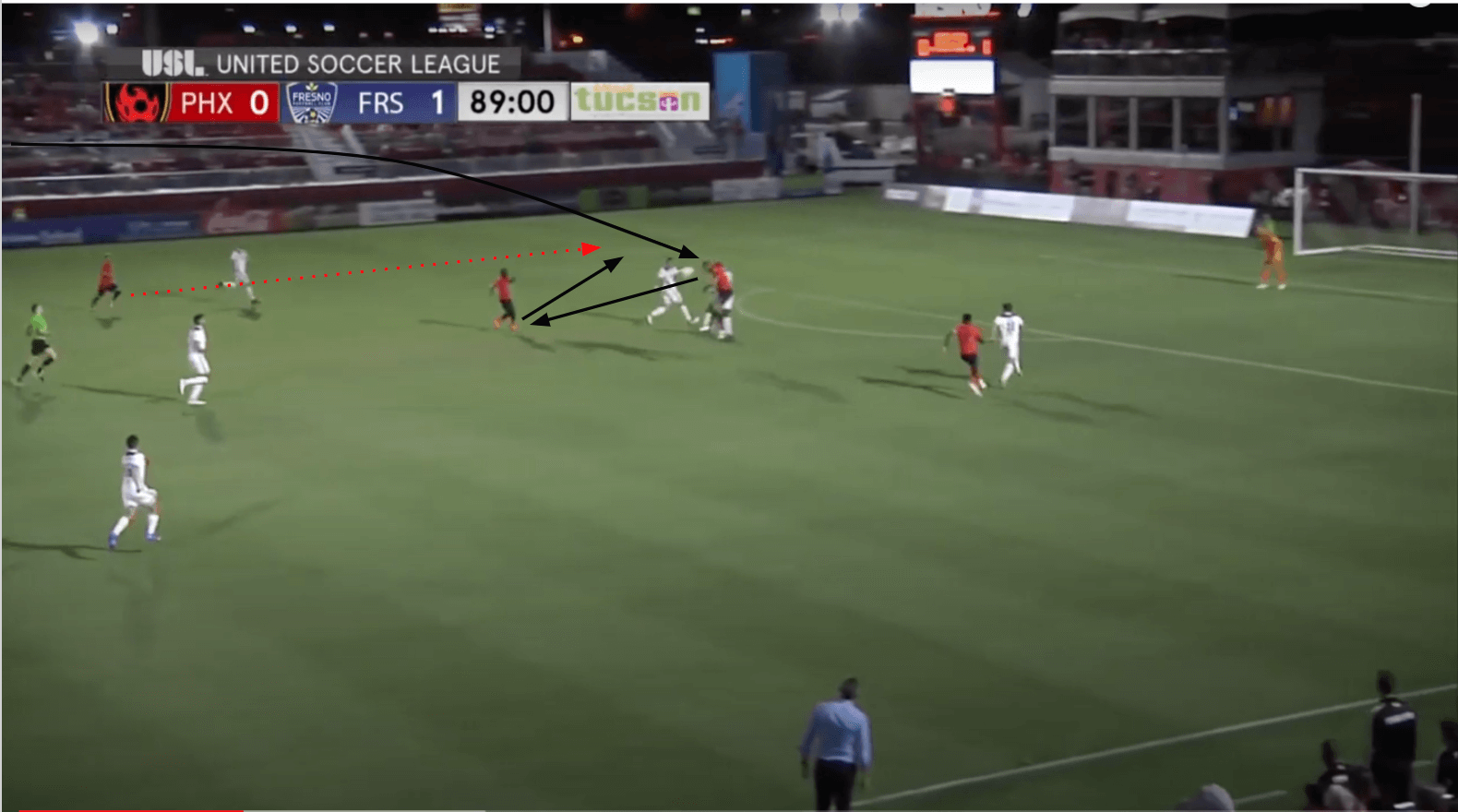
A long vertical pass was played up the pitch to Rising’s centre-forward. Asanté is typically not tall enough to challenge for these headers, but he puts himself in enough space to receive the layoff pass. This is a pretty straight-forward example of the third-man concept, which is often used by RB Leipzig and Bayern Munich in the Bundesliga. With enough room to find more space, Asanté settled the ball down and played a through pass to his teammate Alessandro Riggi, who was able to use his first touch to bury his shot in the back of the net. Asanté’s ability to find space for himself and his teammates make him so dangerous when he is on the ball.
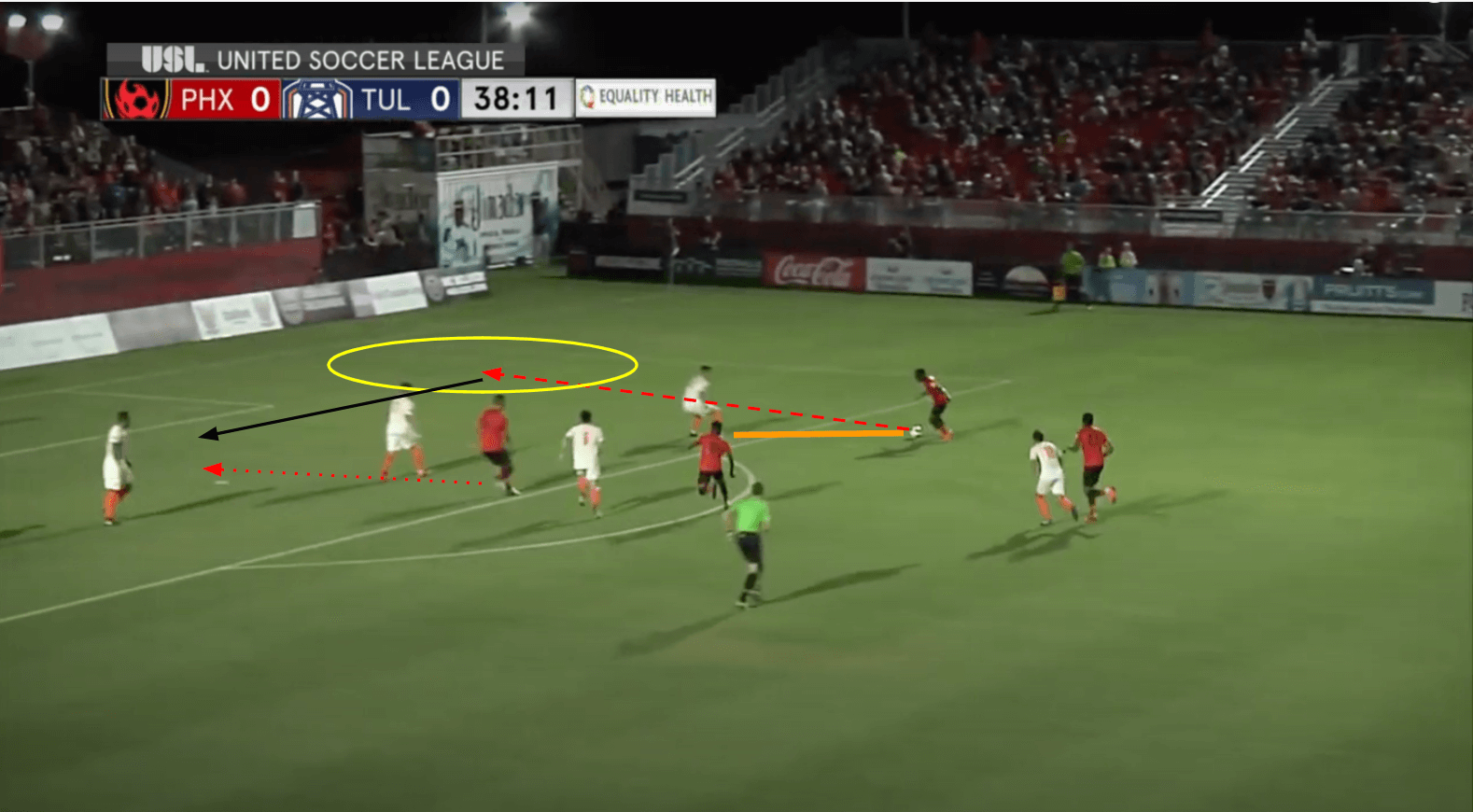
Another example of Asanté’s ability to create for his teammates comes from his ability to dribble. In the example above, Asanté received the ball at the top of the box. The orange line between himself and the defender indicates how much room Asanté had between him and the defender. Asanté began dribbling forward as soon as the ball was at his feet, freezing his defender in the process. This allowed his teammates time to get into the 6-yard box while also allowing him to feign left to shift his defender’s weight. Asanté then attacked his back foot, dribbling past him before crossing into the area to a waiting Chris Cortez, who finished coolly.
One of Asanté’s most consistent and dangerous plays from the wing is his use of the forward cross. This is especially dangerous when Phoenix attacks during a transition.
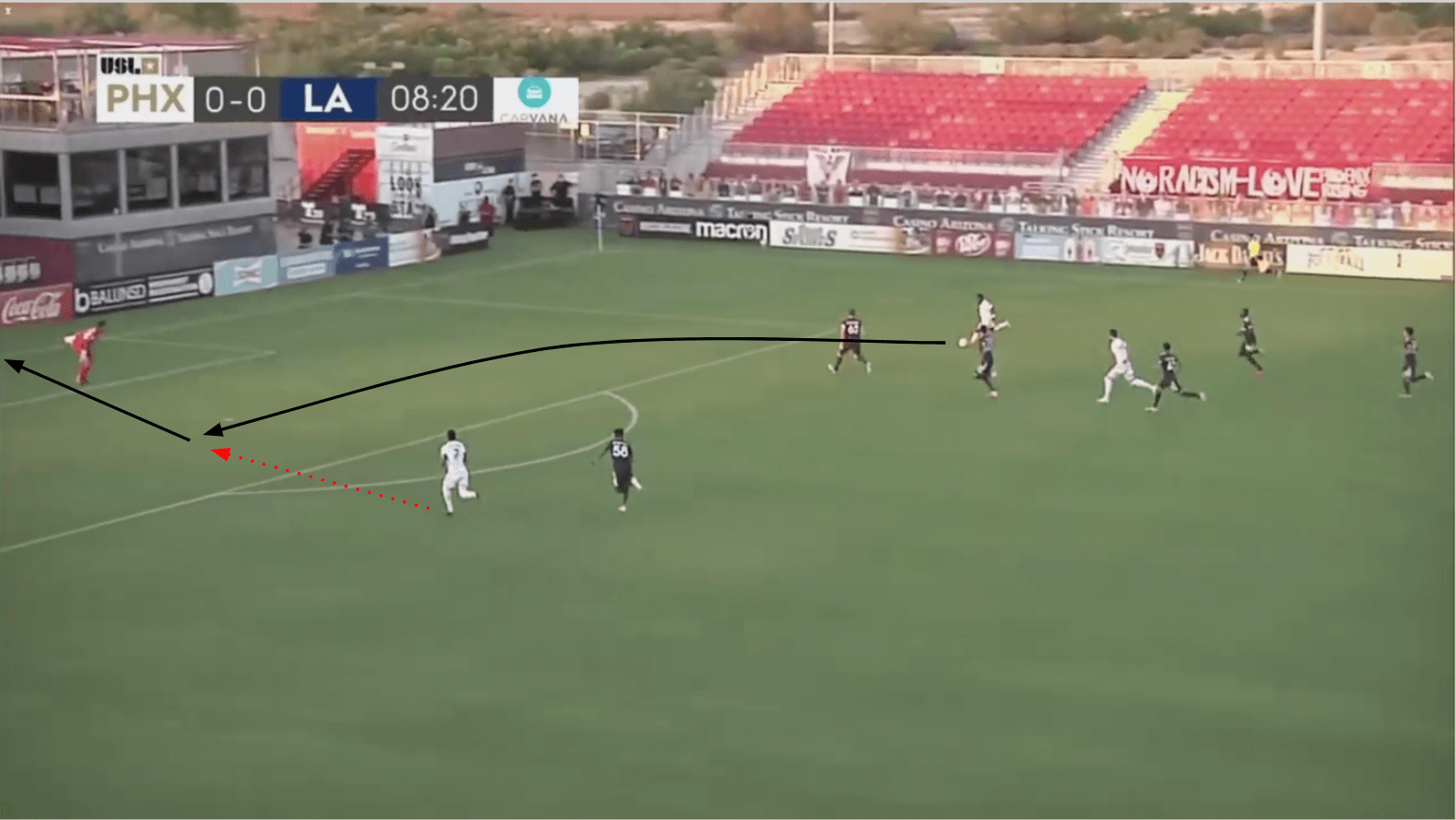
A prime example of this comes from Rising’s first goal against LA Galaxy II in their recent match. After gaining possession, Rising quickly got the ball up the pitch. Dadashov, their centre-forward, played a wonderful pass into the path of Asanté. The pass was weighted so perfectly that Asanté had time to pick his head up and survey the situation. In less than a second, Asanté recognised the large amount of space between the goalkeeper and the defenders (ideal for a forward cross) as well as the fact that Junior Flemmings had already beaten his man. With his first touch of the ball, Asanté curled a cross into the box, eliminating the goalkeeper from making a play on it while also leaving enough room for Flemmings to put the ball in the back of the net. His recognition of space, teammates, opponents, and the ball allows him to deliver these killer passes on a consistent basis for Phoenix.
Play in right half-space
Asanté also utilises the half-space incredibly well when he needs to drop down and help his teammates progress the ball up the pitch. Asanté’s ability to receive and distribute from the half-space makes him an incredibly important part of Rising’s attack, especially when they need a numerical advantage in midfield.
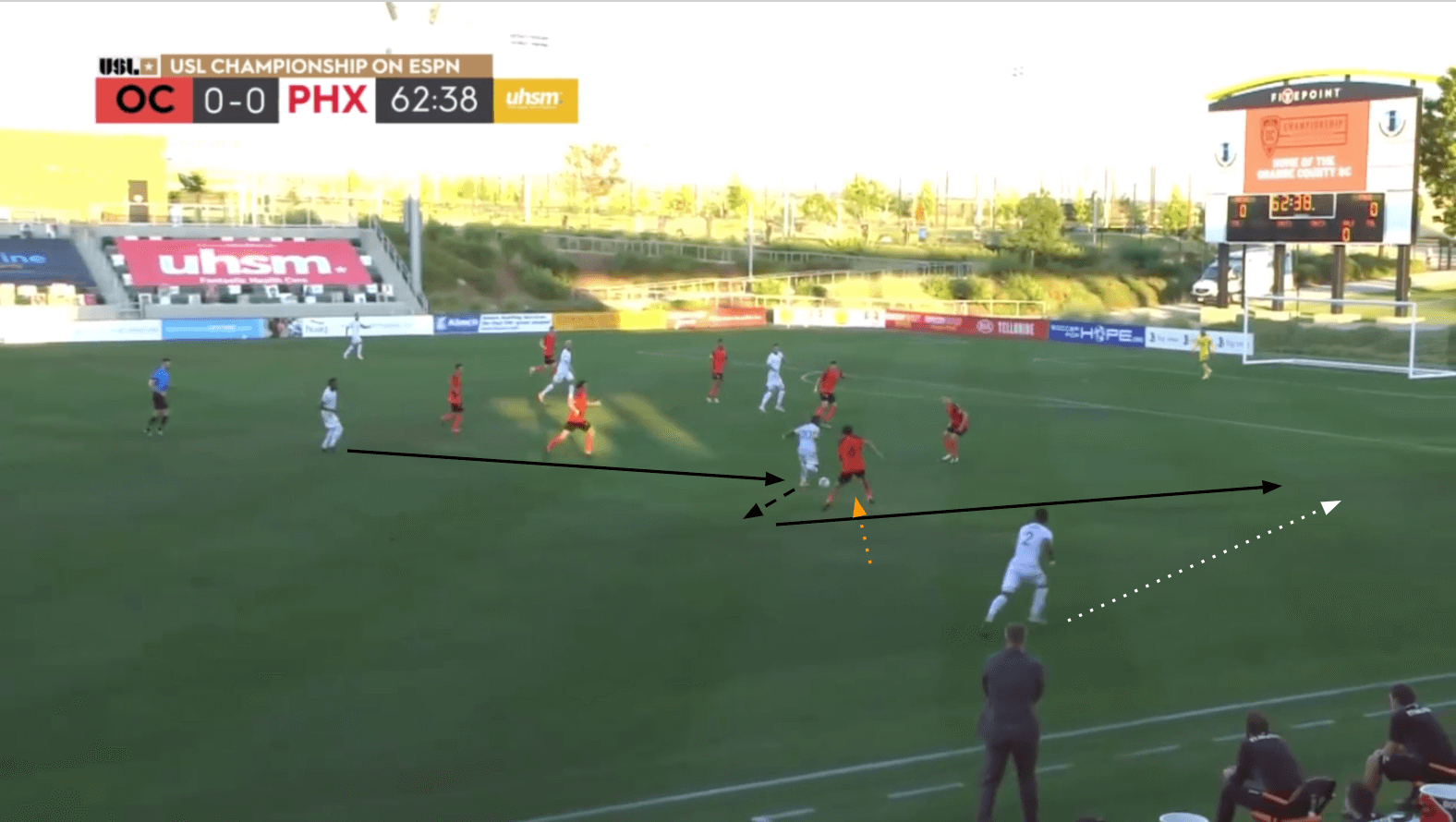
In the example above, Asanté ran at his defender for a step or two, causing the defender to drop. Asanté then stopped himself as the pass from Junior Flemmings was on its way to his feet. As he received the ball, Orange County’s left-back began to close him down. Because he had his head up, Asanté was able to dribble backwards, avoiding the pressure and playing the ball into Darnell King, who was wide open on the wing. While his vision and ability on the ball are important, the fact that Asanté attracts so much attention from opponents means that he is creating space for his teammates to exploit.
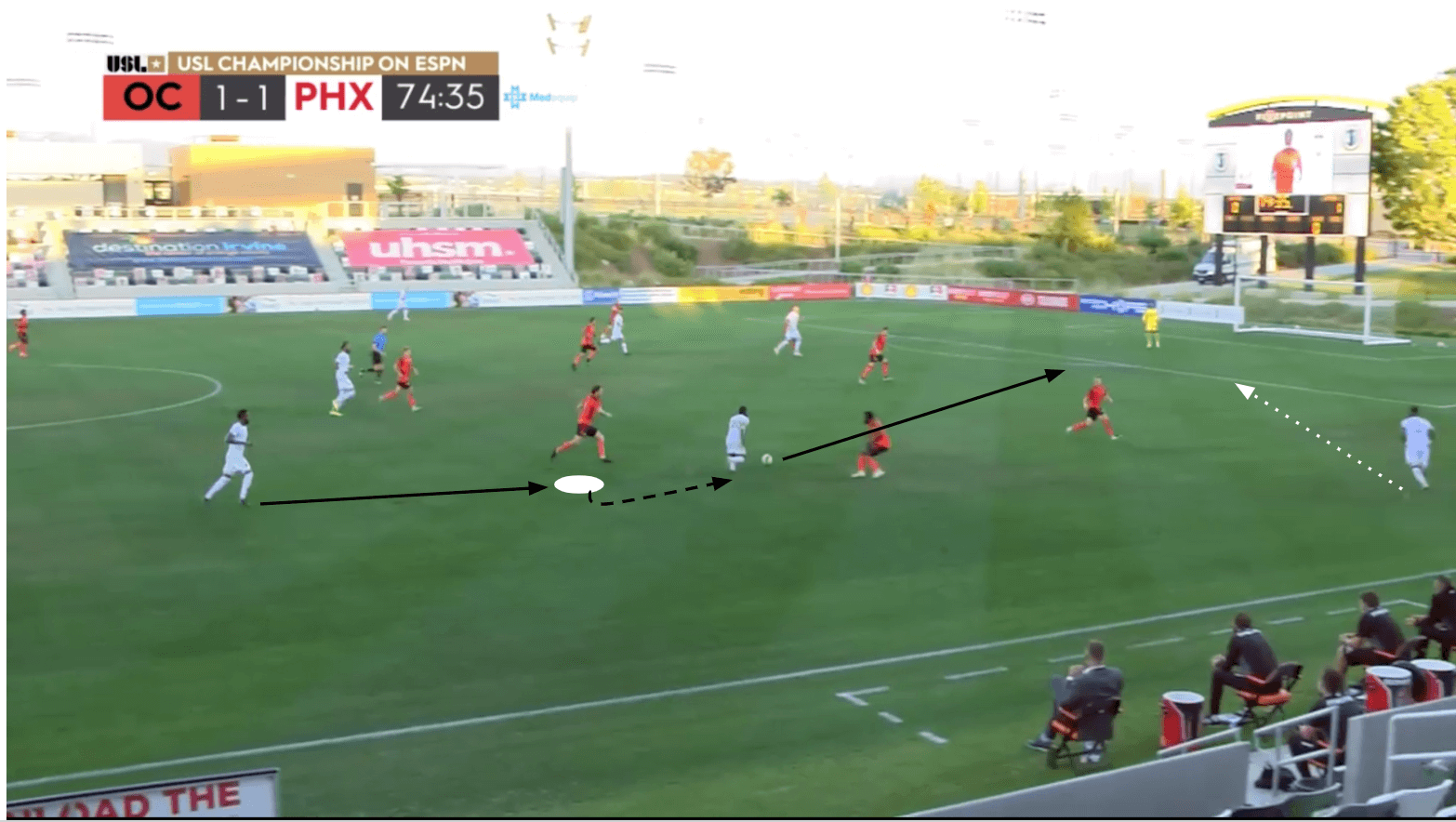
Later in the match against Orange County, Asanté again dropped into the midfield. As previously mentioned, the large amount of space between himself and his closest defender meant that he had room to dribble and progress up the pitch. Because Orange County pressured Asanté with their left-back their centre-back had to pressure the overlapping Darnell King. This opened up a large amount of space between the centre-backs, which led to a large amount of space available for King to run into. Unfortunately, Asanté’s pass was just off the mark, and Orange County deflected the ball into the centre of the pitch. Phoenix quickly counter-pressed and won possession of the ball.
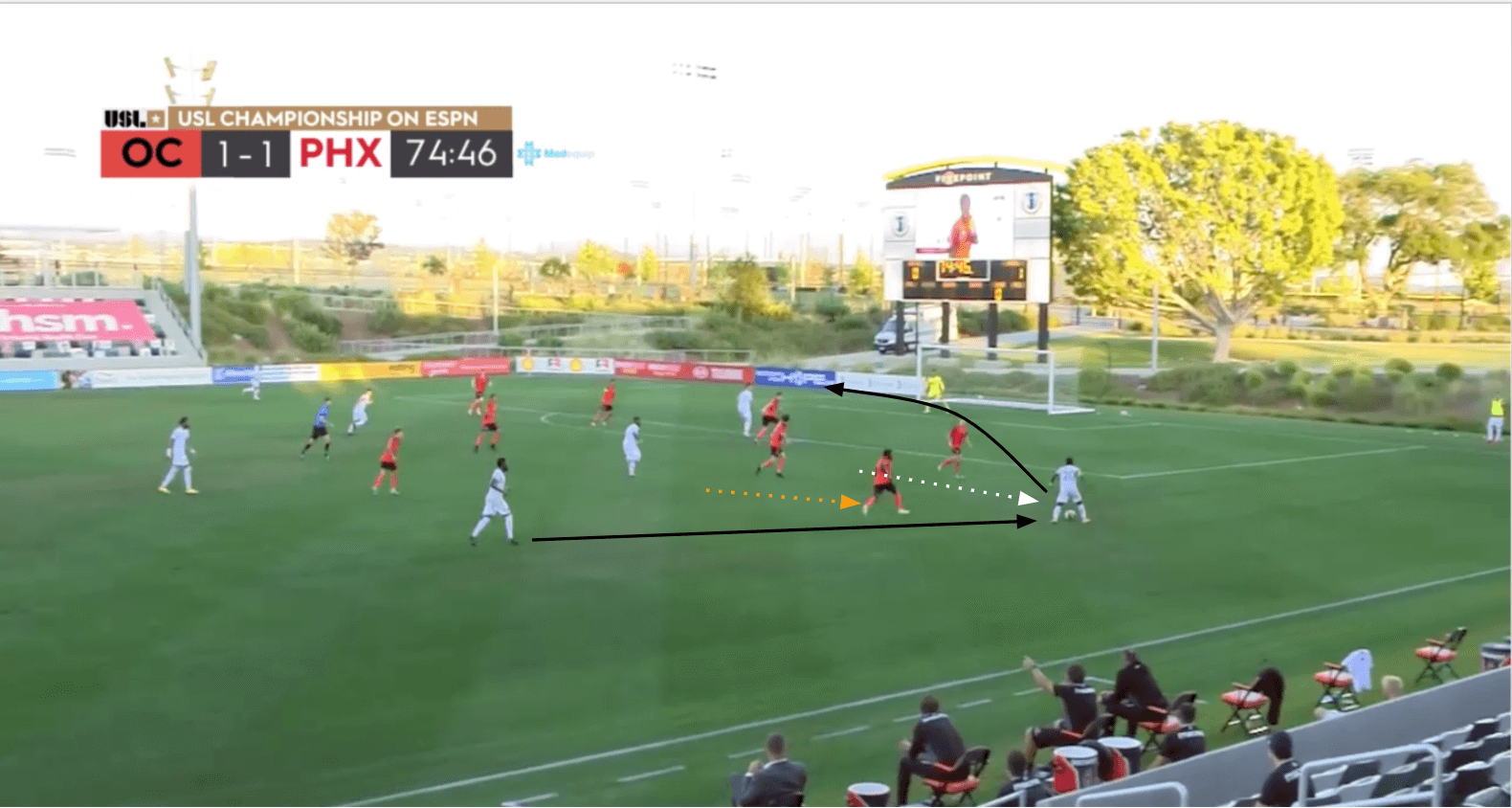
As they do, Rising looked to exploit the chaos that occurs during transitions. Asanté, who was still inside the half-space, backpedaled into the space on the wing, where Junior Flemmings found him with a pass. Orange County was not able to provide any pressure on Asanté, again allowing him too much room to operate. Asanté took advantage of the space to pick his head up and deliver another forward cross to the head of Dadashov, who was unable to put his header on target.
Creation of space for himself
While Asanté can create space for his teammates by dropping into the half-space, he also can create space for himself by observing defender’s movements and reacting accordingly. He often looks to occupy areas that are behind defenders, making it very difficult for opponents to mark him without opening up even bigger areas of space for Phoenix to attack.
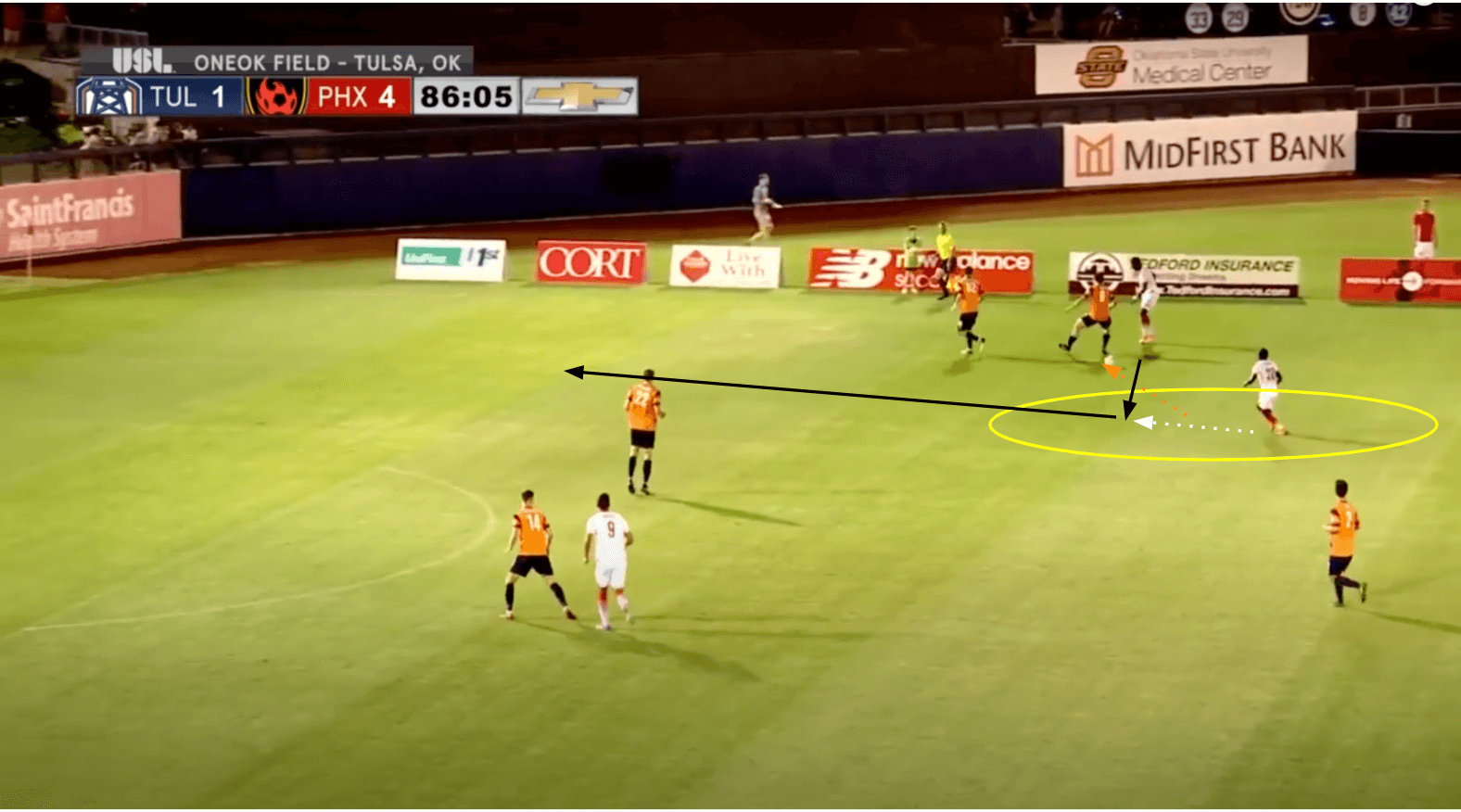
The first example comes from a match against Tulsa in the 2018 season. As the Tulsa defender slid over to pressure the ball, Asanté stayed put in the half-space. His recognition of the defender’s poor decision to provide additional pressure on the ball opened up a large amount of space for him. The defender never looked back to check on Asanté, so he stood in the space behind him with a lot of room to operate. Upon receiving the ball, the gap between the two centre-backs was so big that Asanté was able to receive and dribble into the gap between them, firing off a shot that was saved by the goalkeeper.
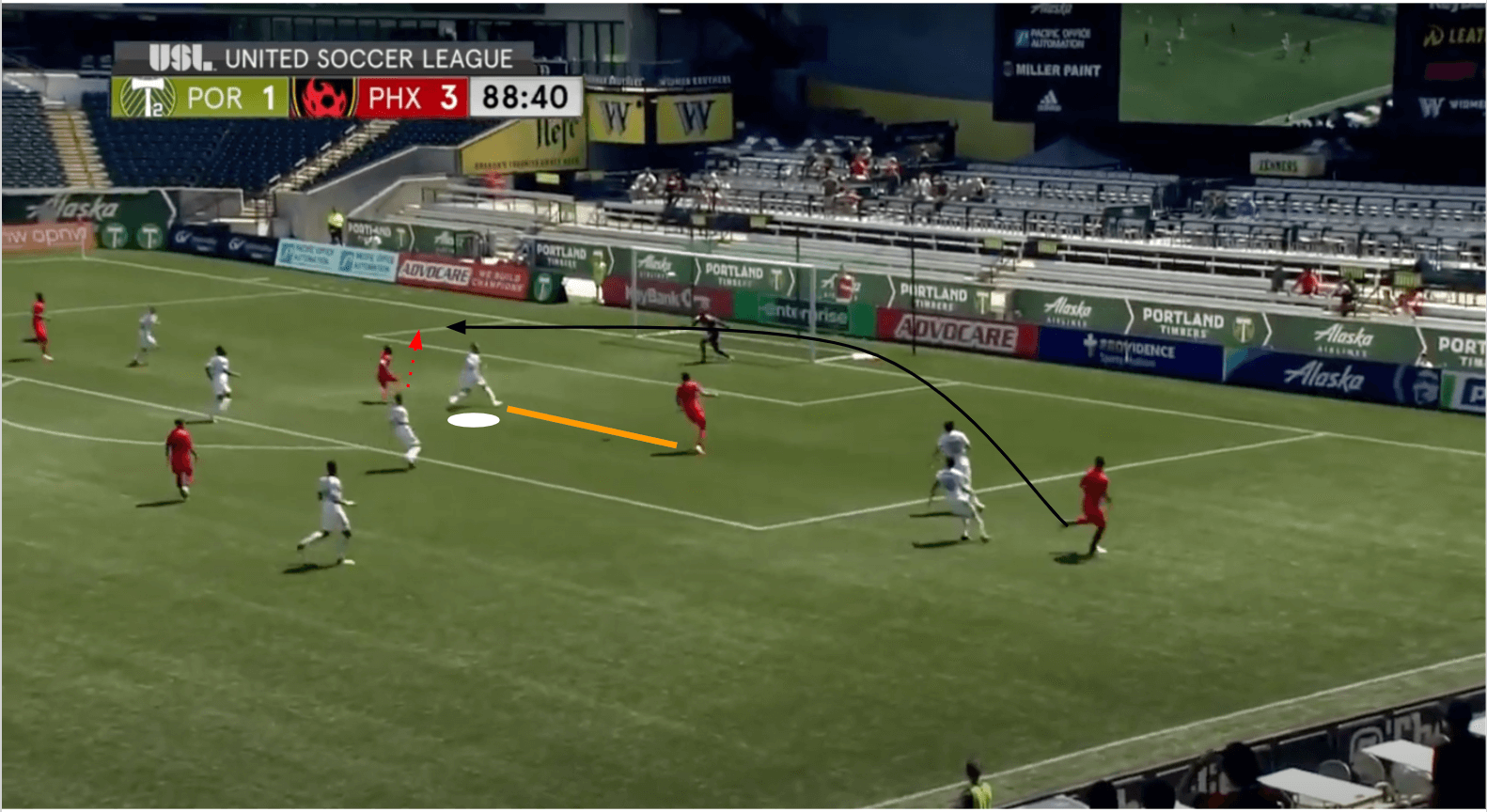
Another example of him exploiting space behind a defender is shown above. The ball was played to the right wing. Asanté is actually inside the penalty area. His defender’s positioning is poor; instead of facing both his man and the ball, the defender is looking at the ball and the man in front of him. Asanté recognised his defender’s body shape and made a diagonal run away from the defender. The cross looped into the far post, and Asanté had created enough room to finish off the chance.
Another part of his game that makes him so dangerous is his ability to create space for himself when he is on the ball. This is in part due to his smaller stature, which allows him more steps and touches than his opponents.
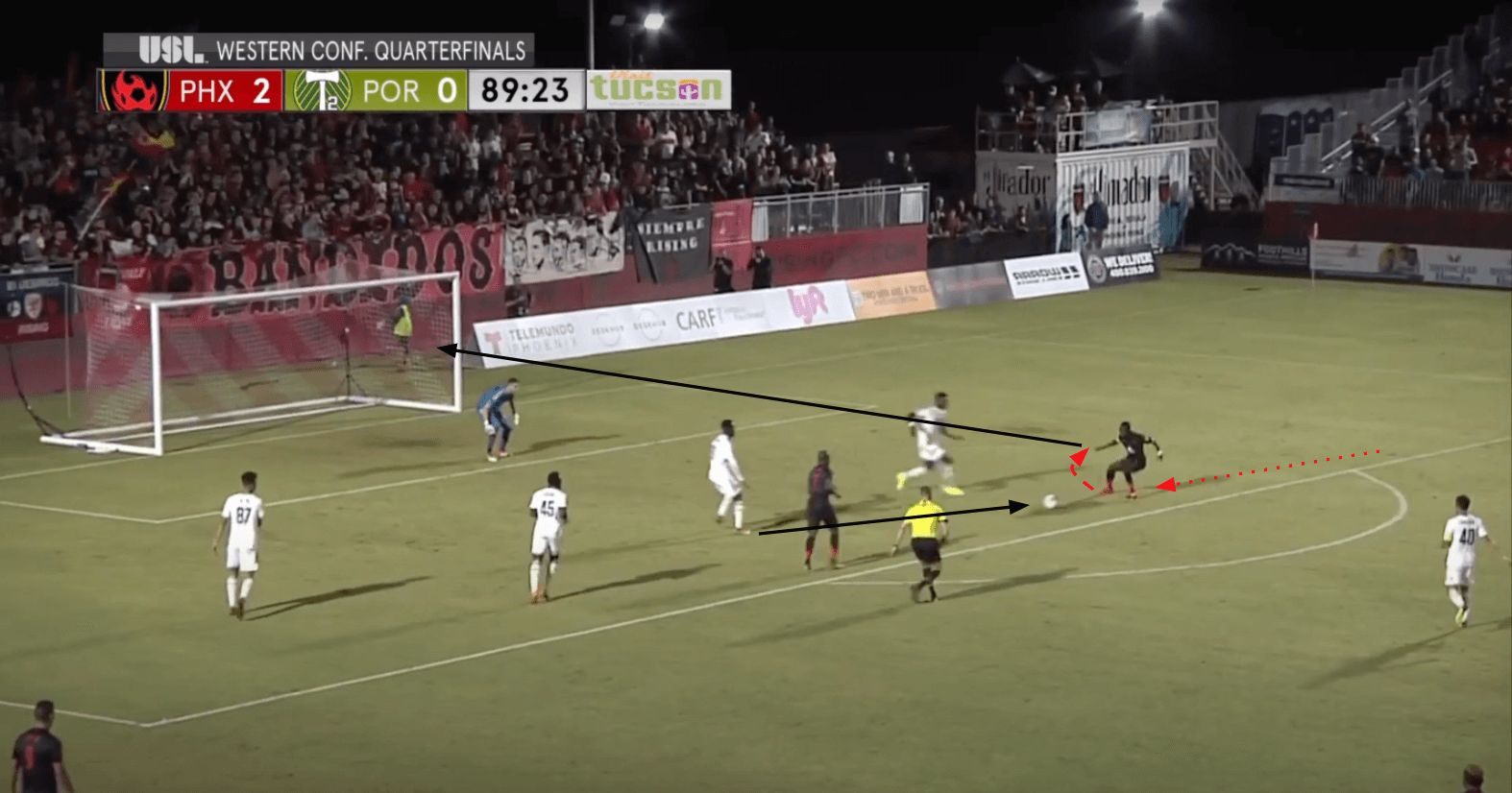
These extra steps and touches become incredibly valuable when he is in tighter spaces, like the example shown above. A deflected shot rolled across the top of the box towards him. Asanté and the closest defender both sprint towards the ball. Asanté got there quicker and dropped his shoulder, looking like he was going to dribble forward. Instead, he used his extra step to get over the ball and then open up his hips to face the goal. The defender lunged in late towards his left foot, but Asanté already had the ball on his right, which he used to blast past the goalkeeper into the back of the net.
Area of improvement
While Asanté has demonstrated so many strengths outlined above, there is some room for improvement, seen in his more recent games. Most of the improvements come in the form of positioning in accordance to his teammates’ positioning on the pitch.
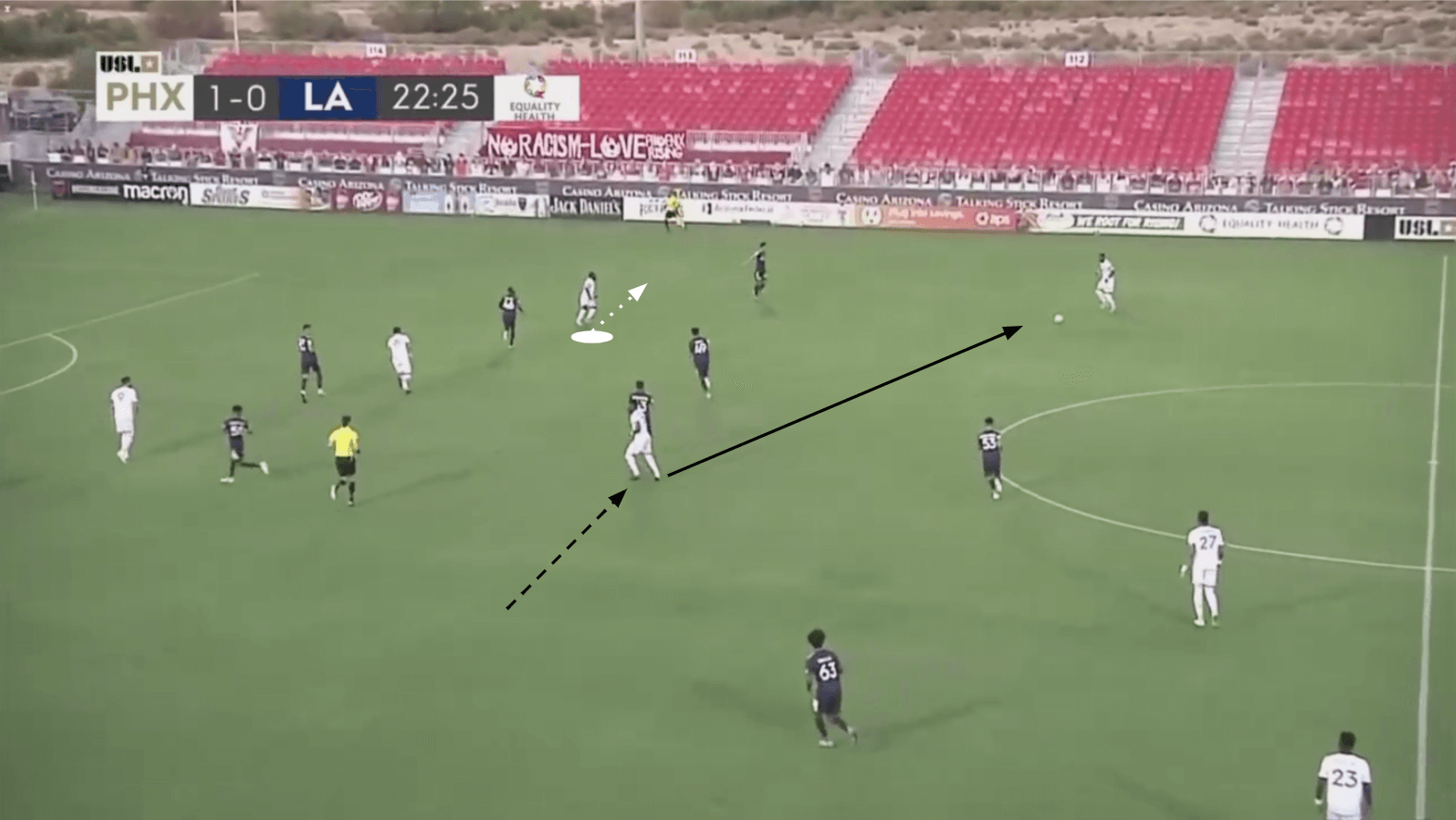
The first example comes from Rising’s match against LA Galaxy II, which they comfortably won 4-0. Junior Flemmings was dribbling inside from the left flank, and Asanté was in the position shown above. As Flemmings progressed, no real passing lanes opened up beside the obvious horizontal pass to Darnell King, the right-back. Asanté didn’t move as Flemmings dribbled or as King received the ball. When King had the ball, Asanté was positioned behind the defender, unable to receive a pass from King at all. This forced King to dribble inside and go back into pressure. Ideally, Asanté would have begun to widen the attack earlier, allowing King to have multiple passing options when he received the ball.
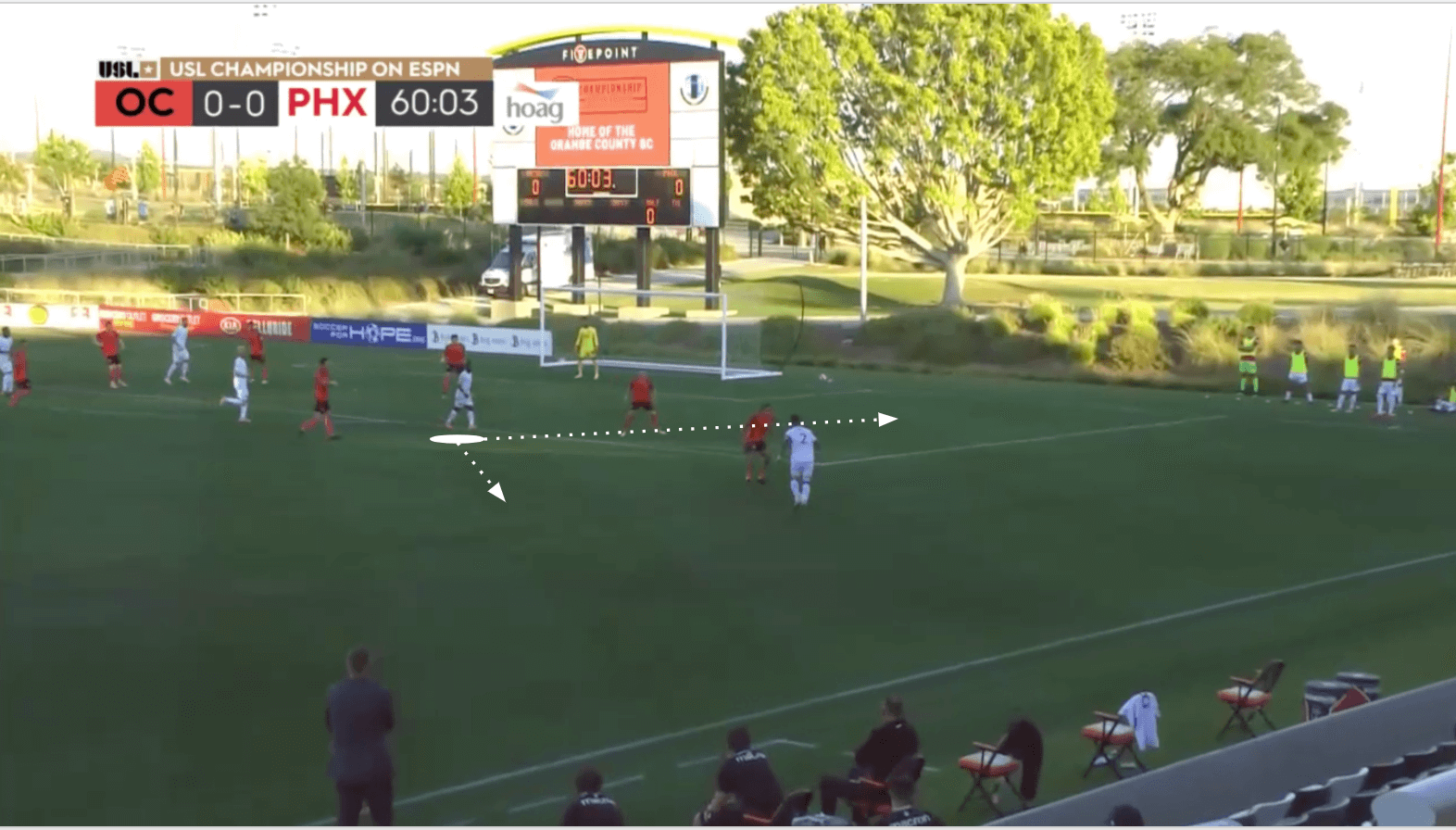
Above is another example of Asanté not providing a lot of support for King. In the image, King was dribbling at the Orange County defender. Initially, Asanté did well to give him room to try and beat him on the dribble. However, King’s hesitation on the ball signaled that he was unsure of what to do. Ideally, Asanté would have provided some sort of support with either of the two runs highlighted above. He could drag a defender to the corner to create space and time for King, or he could even check back into the half-space for a potential 1-2 pass. Instead, Asanté stood still and King had to play the ball backwards.
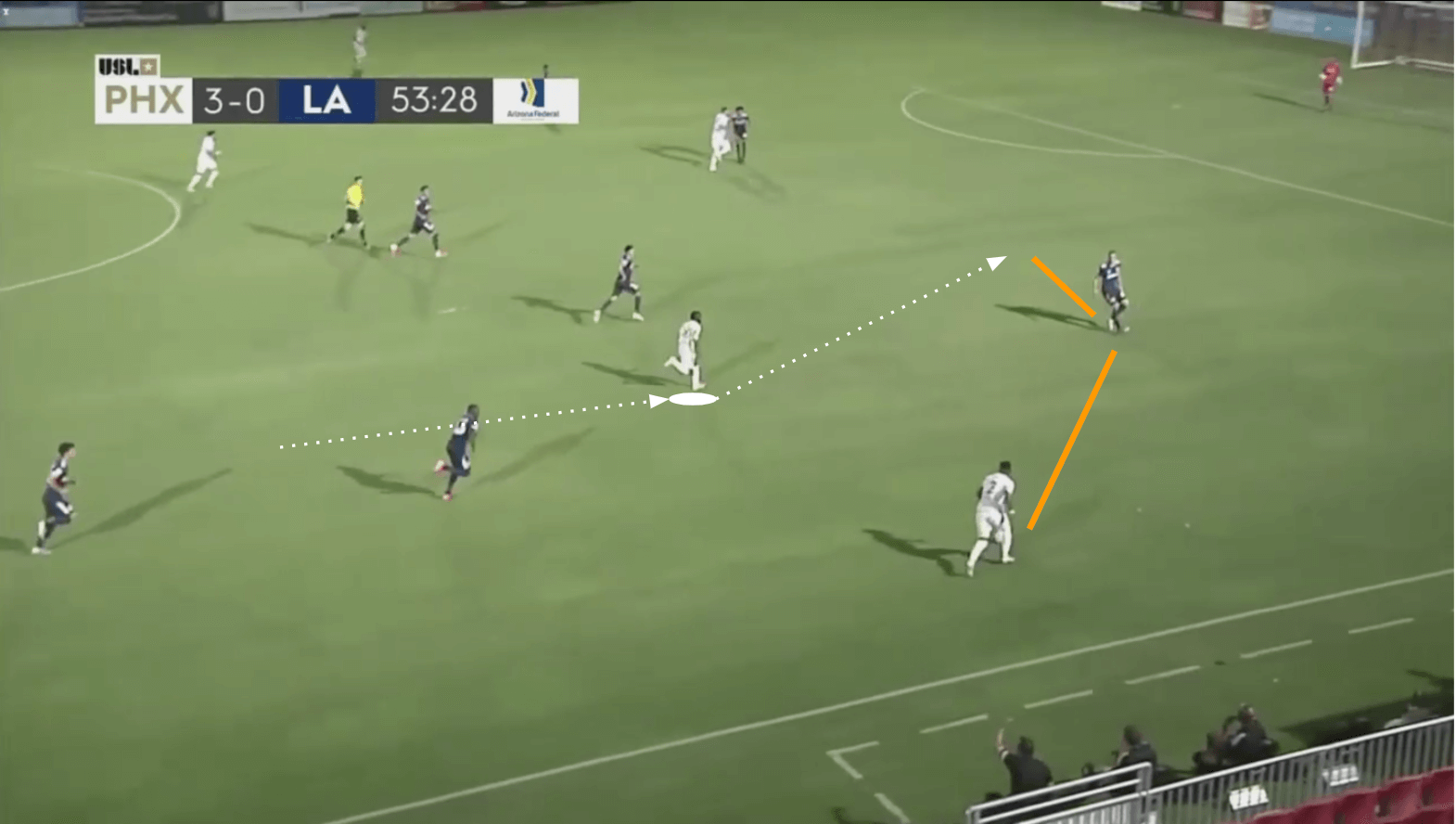
One final piece that Asanté can improve upon are the runs he makes. Oftentimes, Asanté’s runs are incredibly vertical. As shown above, this can become a problem. In the image, Asanté made a long run that was essentially straight. While he had his marker beat, the defender who was marking King, who was dribbling the ball, was able to both defend King properly and prevent King from playing his pass to Asanté. If Asanté had made a diagonal run towards the corner as King dribbled in, the defender would have had to make a choice: stop King or drop to cover Asanté. Instead, he was able to do both at the same time, essentially killing Rising’s attack in the process.
Conclusion
Asanté’s contributions to Phoenix Rising’s success are undeniable. His ability to dominate play on the right wing makes him an easy match day selection for Rick Schantz. Not only can he score, but his ability to set up his teammates makes him a threat against every club the Rising plays. As long as Phoenix can keep him at the club, he will continue to be a dominant force in the USL for years to come.





Comments